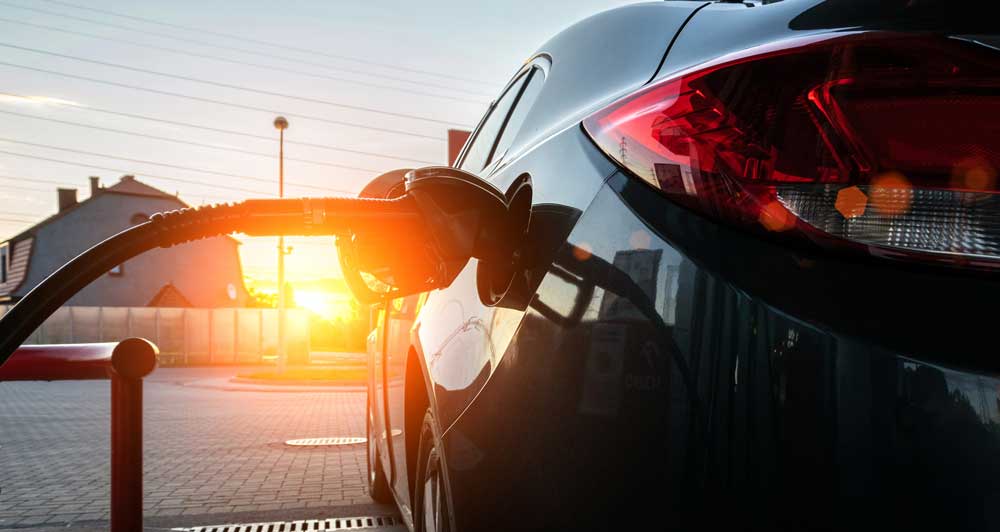
The world is full of endless possibilities made up of countless combinations of results. But by virtue of being bipedal animals with two eyes, two hands, two cerebral hemispheres, and a heart that beats thousands of times a day as it expands and contracts, we are programmed to think in binary terms.
This is even true with inherently chaotic activities like operating a car; do we drive manual or automatic? On the right side of the road or the left? Diesel or gasoline? Each of these choices is more or less made for us thanks to the country or type of car we find ourselves in. But as time has gone on, our Master Muffler technicians have noticed something of a trend emerging: more and more people are beginning to reassess the type of fuel they put into their cars, which is informing their next car purchase.
Let’s dive deeper into the differences between diesel and standard gasoline and find out why so many people are making a switch.
A Tale of Two Engines
It might surprise those who aren’t that familiar with cars to know that diesel engines differ from those found in traditional gas-operated vehicles. Created by a German engineer by the name of Rudolf Diesel just two years after the development of the gasoline engine, the diesel engine was made in order to address a single, glaring problem: Diesel was confused by the fact that only 10% of fuel was being used in the new gas engine and everything else was allowed to be burnt off.
How it Works: Gas Engine
In order to understand Diesel’s complaint, let’s review for a moment how the typical gas-powered internal combustion engine works. This is the standard engine in most vehicles and is a foundational part of our Ogden car repair services.
- A mixture of air and fuel vapors enters the combustion chamber through the fuel intake valve.
- A crankshaft compresses the chamber so that the mixture becomes very dense in an enclosed space.
- As the space gets smaller and smaller, a spark plug ignites the mixture, causing a small explosion of gasses.
- These gasses are then let out of the combustion chamber to go through the rest of the emissions system.
- The power of the combustion powers the rest of the engine and in turn, the whole vehicle.
The process is known as the four-stroke combustion cycle, each stroke being a part of the process, from intake, compression, combustion, and exhaust. When you bring your engine in to get it serviced at one of our Master Muffler car repair shops, we’ll be monitoring this cycle.
How it Works: Diesel Engine
Diesel thought that the problem, in large measure, lay in the combustion stroke of the process. What if the spark plug could be bypassed altogether and the compression itself could be the means of burning the fuel? With this question in mind, he created the other type of engine seen so often in our Ogden car repair center.
- The engine works nearly identically but compresses the mixture to a far greater degree. In regular gas engines, the compression is about a tenth of the original volume. In a diesel engine, the compression is anywhere from 14 to 25 times the volume.
- Injecting so much fuel into a space that small is going to generate an incredible amount of heat, causing combustion automatically.
- Diesel fuel is also thicker, which means that it produces more burn and has greater fuel efficiency than regular gas.
Ogden Master Muffler Keeps You Moving
Regardless of the engine you have, our technicians are experienced with every make and model on the road today. Whether you have an issue with your tires, your oil, or your engine, our full suite of services will not only keep you on the road but will keep the car working better. Better performance means a safer journey. Drop by today for a full tune-up.
Related Posts
As an EV owner, understanding your vehicle's battery is critical. From its capacity to its lifespan, and everything in between, we'll guide you through what you need to know to optimize your EV experience. So buckle up and get ready - we're about to shed some light on the electrifying world of EV batteries. What [...]
If your car is running hot, it can be a sign that something’s not right with your engine. Fortunately, diagnosing the cause of an overheating engine isn't too difficult if you know what to look for and how to address it. Keep reading if you want to learn the most common issues that occur when [...]
Your vehicle's exhaust system serves a critical role in managing the byproducts of the combustion process and ensuring optimal engine performance. The appearance of colored smoke from the exhaust pipe, either when stationary or accelerating, can provide valuable clues to underlying mechanical issues. What is a car exhaust? A car exhaust is a system [...]





